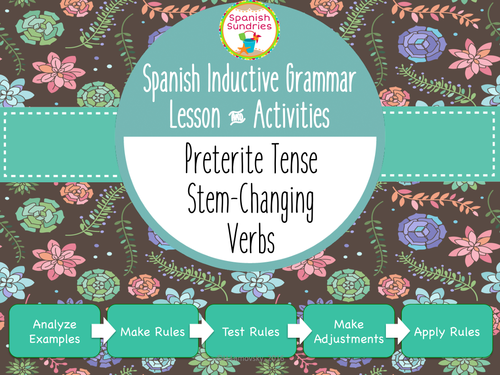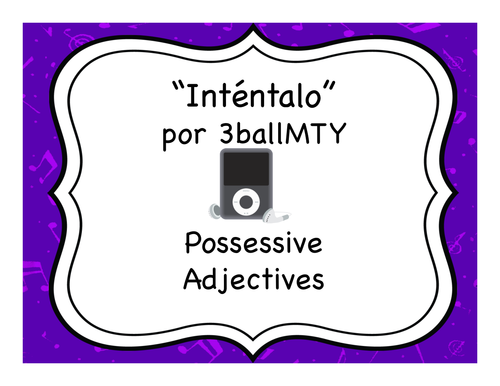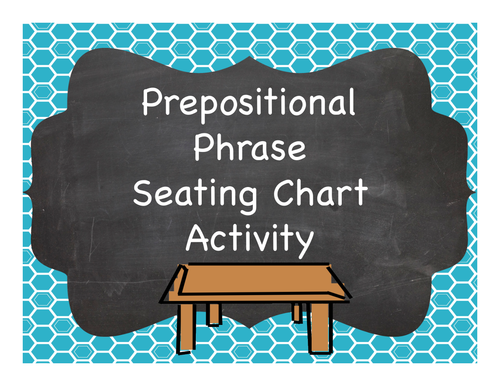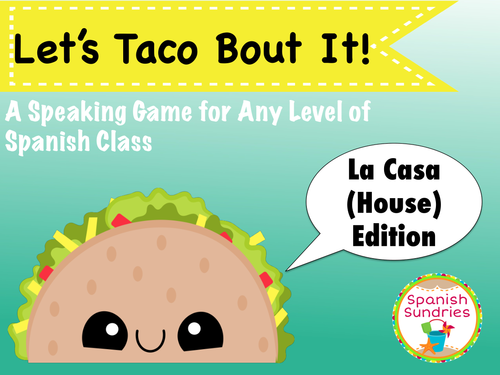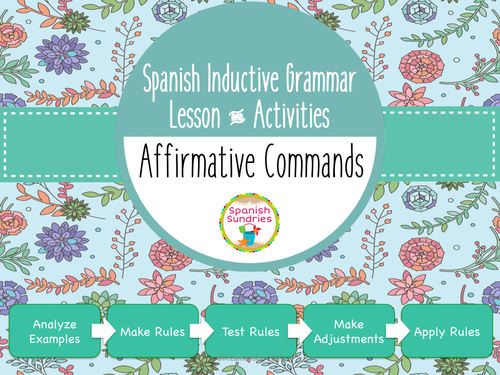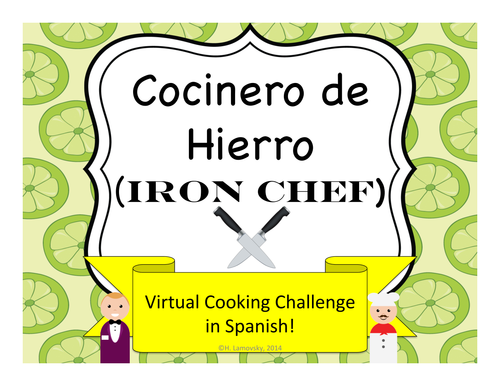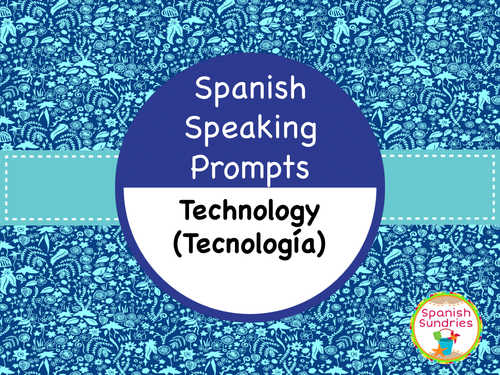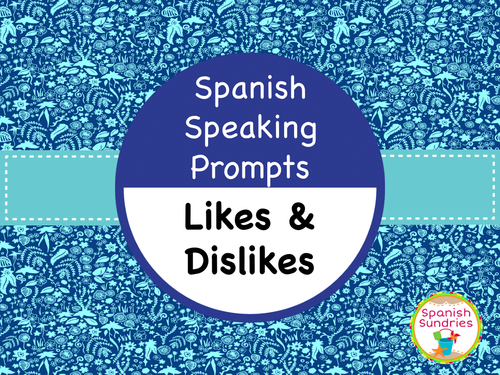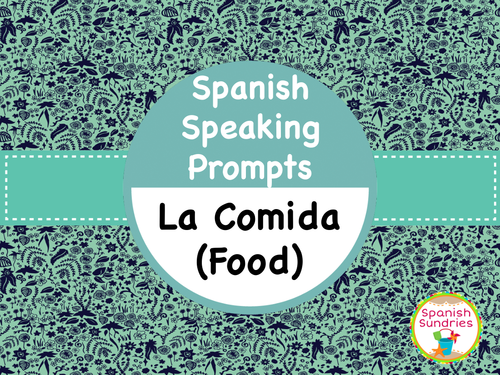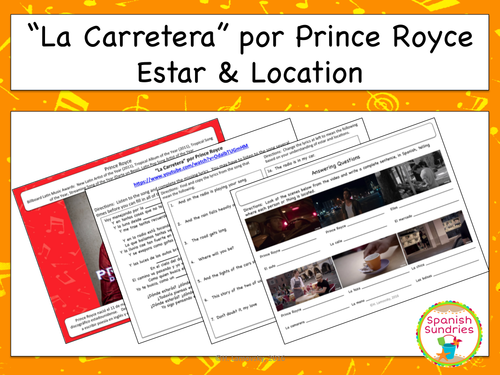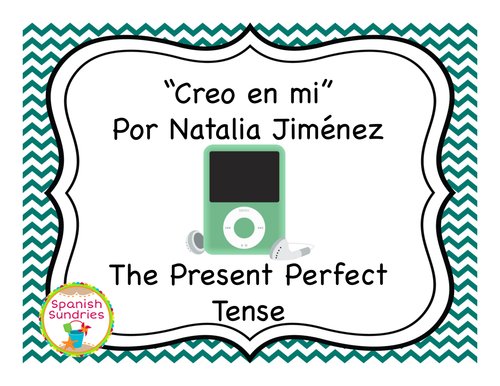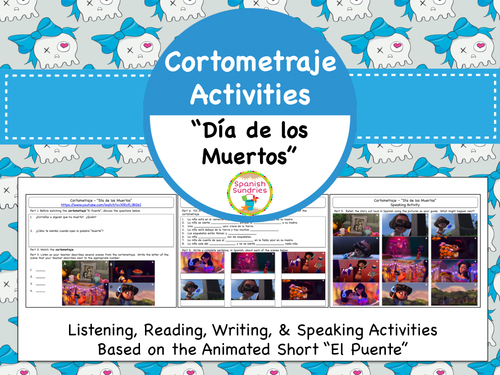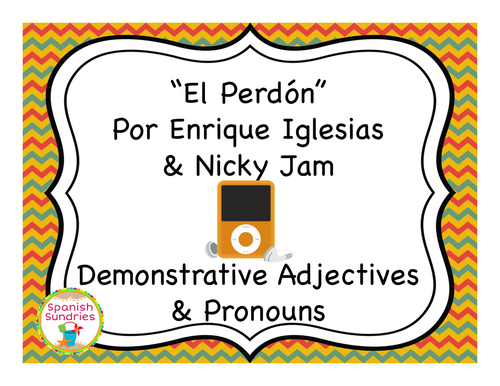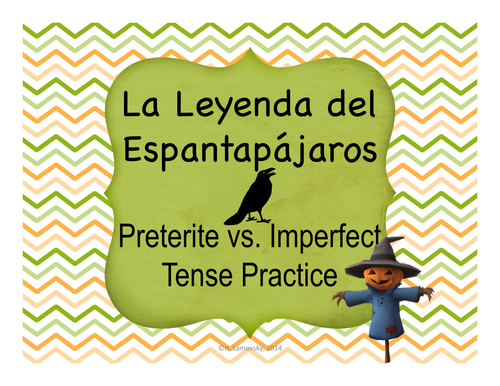
320Uploads
91k+Views
4k+Downloads
World languages

Spanish Inductive Grammar Lesson: Preterite Tense Stem-Changing Verbs
This inductive grammar lesson leads students to discover the rules behind using the stem-changing verbs SERVIR and DORMIR in the preterite tense in Spanish.
Students will follow a 4 step inductive process to make learning grammar more meaningful.
Step 1: Students will see examples of correct usage and create rules based on what they observe.
Step 2: Students will test those rules against additional examples of correct language usage.
Step 3: Students will make adjustments and additions to their rules based on more observations.
Step 4: Students will apply the rules while producing their own language.
These scaffolded activities promote higher order thinking skills and represent the method of grammar instruction that is recommended by national organizations like ACTFL.

"Inténtalo" & Possessive Adjectives
These activities go along with the song "Inténtalo" by 3Ball MTY (pronounced Tribal Monterrey) which is readily available on YouTube and iTunes. In this activity, students listen to the song and complete the missing lyrics. Then, they are asked to locate certain lines of the song, copy them, and manipulate them. The manipulation of the lyrics requires them to use possessive adjectives (mi, tu, su, etc). Students will practice listening, reading, and writing in this lesson.
Included in this download;
1. Artist Biography (in Spanish)
2. Clozeline Activity
3. Lyric Identification Activity
4. Possessive Adjective Activity
5. Answer Keys for all activities

"Sol, Playa, y Arena" & The Verb IR
This activity goes along with the song "Sol, Playa y Arena" by Tito el Bambino which is readily available on YouTube and iTunes. In this activity, students listen to the song (link provided) and complete the missing lyrics. Then, they are asked to locate certain lines of the song, copy them, and manipulate them. The manipulation of the lyrics requires them to use the present tense of the verb IR as well as some vocabulary related to places and GUSTAR. The lesson also includes a short artist bio. Students will practice listening, reading, and writing in this lesson.
This Product Includes:
1. Artist Biography
2. Fill in the Blank Clozeline Activity
3. Lyric Identification & Manipulation Activity
4. Answer Keys for all activities
*Please be aware that due to the semi-mature theme of this song, it is recommended for high school students. Please view the video before showing it to your students. All activities may be completed without having viewed the video.*

"Agua del Pozo" & Definite/Indefinite Articles
Clozeline activity for the song "Agua del Pozo" by Alex Cuba, winner of a Latin Grammy for Best New Artist in 2010. Also included is a follow up activity that asks students to examine and change lyrics of the song. This is targeted at Spanish I students.
This Product Includes:
1. Artist Bio
2. Links to Official Music Video & Interview
3. Cloze Activity
4. Lyric Manipulation Activity

El Año Nuevo Infographic Reading Activities
Do you want to teach students about New Years traditions in the target culture without a boring lecture? Do you always see awesome infographics and you just don't know what to do with them?
This product contains 3 different reading activities to accompany a variety of the infographics available for free on the Internet. Due to their visual nature, infographics are a great way to get students reading interesting, age appropriate content even at a beginner level. The activities included for each infographic also align with the ACTFL goals for interpretive reading at the Novice level.
Your students will be encouraged by how much they can actually understand AND they will be building their interpretive reading skills and cultural competency while they do it!
This Product Includes:
1. Links to 3 different infographics available on the Internet*
2. 3 Reading Activities (1 per infographic)
3. 3 Writing Prompts (1 per infographic)
Infographic Topics Include:
1. Tradiciones de Fin de Año
2. Propósitos de Año Nuevo
3. Los Españoles y el Año Nuevo
*Note: Due to copyright, the actual infographics can not be included with the product, but their direct links can and are*

Prepositional Phrase Seating Chart Activity
In this activity, students must read and understand 20 Spanish sentences to complete a seating chart. Focus phrases include "entre, delante de, detrás de, a la derecha de, a la izquierda de, al lado de, cerca de, and lejos de.
Ready to Print, Copy, & Go!

Let's Taco Bout It! - Casa (House) Edition
This is a low prep game that will get your students speaking on the topic of "La Casa" (House).
Students will challenge each other to be the first to earn all the ingredients for their taco as they attempt to say longer and more detailed sentences in Spanish that contain a particular word.
This game is easily differentiated (instructions included) for any level of Spanish class. It also easy to create your own additional cards with the blank template if you would like to focus on additional vocabulary words.
This game is great for working with current and recycled vocabulary as well as raising student proficiency levels by encouraging incremental increases in the complexity of their spoken language. It also requires listening to the other members of the group which keeps students focused and on task. More important to the kids, it is just fun.
This product includes:
-Guide for Educators
-Visual instructions to share with students
-Taco Template
-24 game cards
-Blank Template for the creation of additional cards by the teacher or students

Parque de Diversiones Internet Activity
In this activity, students will visit the websites of amusement parks in Mexico, Spain, and Chile. As they navigate the sites, they will be asked to find basic information that one would need in order to plan a trip to an amusement park, all in the target language! After finding the basic information and answering some questions, they will complete a Venn Diagram comparing the amusement park to one that they have been to. Finally, they will write sentences, in Spanish, comparing the two parks.

Spanish Inductive Grammar Lesson: Affirmative Commands
This inductive grammar lesson leads students to discover the rules behind using both informal and formal affirmative commands in a variety of situations in Spanish.
Students will follow a 4 step inductive process to make learning grammar more meaningful.
Step 1: Students will see examples of correct usage and create rules based on what they observe.
Step 2: Students will test those rules against additional examples of correct language usage.
Step 3: Students will make adjustments and additions to their rules based on more observations. They will summarize what they have discovered by creating their own graphic organizer using the included template.
Step 4: Students will apply the rules while producing their own language.
These scaffolded activities promote higher order thinking skills and represent the method of grammar instruction that is recommended by national organizations like ACTFL.

Hispanic Myths & Legends: El Silbón
This lesson introduces beginning language learners to the legend of El Silbón (Colombia, Venezuela) in a way that promotes using legends to learn about culture in a deep and meaningful way.
This lesson asks students to consider some complex ideas and make connections between the products, practices, and beliefs of Hispanics around the world. These activities promote higher-level thinking that would be beyond the grasp of most students in the target language, so the lessons are done in English to make sure they are attainable.
These lessons make perfect sub plans as they require no prep and little to no Spanish language production.
Students begin by reading the legend of El Silbón and illustrating the legend to demonstrate comprehension and understanding.
Students are then debriefed on the concept of "Familismo" in Hispanic culture and are asked to reflect on how the characters in the legend display or do not display the traits of "Familismo".
Students are then shown two posters for an event that takes place yearly in Venezuela and references the character "El Silbón". They are asked to assess the posters to draw conclusions about the event and then use that to create an additional poster of their own creation.
Finally, students will read a second and slightly different version of the legend. They will be asked to reflect of how both versions of the story demonstrate the desirable and undesirable behaviors of children in Hispanic culture.
This Product Includes:
-El Silbón Legend (version 1)
-Illustration Activity
-Familismo Activity
-Poster Activity
-El Silbón Legend (version 2)
-Cultural Reflection Activity

"Ay Vamos" por J. Balvin & The Spanish Present Tense (Nosotros Form)
These activities are meant to help students learn how to talk about what "we" do in Spanish using present tense nosotros verb forms.
These activities go along with the song "Ay Vamos" by J. Balvin, a 2015 Latin Grammy award winner for Best Urban Song. This song is readily available on YouTube and iTunes and a link to the song is referenced. These activities may be completed without the music video, so please make sure that the video is appropriate for your students before playing it.
After reviewing a brief biography of J. Balvin, students are asked to listen to the song several times and fill in the lyrics that have been removed. Then, students are given an overview of the concept of the nosotros form in the present tense and asked to complete two inductive grammar activities based on their observations of the song lyrics. Students then are asked to find some additional items within the lyrics of the song in a Lyric Scavenger Hunt activity.
Included in this download:
-Guide for Educators
-Artist Biography
-Link to the song/video on YouTube
-Clozeline Activity
-Nosotros Form Inductive Grammar Activities
-Lyric Scavenger Hunt
-Answer Keys for all objective activities

Cocinero de Hierro (Iron Chef) Virtual Food Challenge
Spice up your food unit with this fun group of activities in which students take part in a virtual iron chef style competition. They begin by choosing 3 ingredient playing cards, then they search a Spanish language recipe site for dishes containing those 3 ingredients. Next, they put together a grocery list, breaking down the items they still need by food group to demonstrate comprehension. They answer questions from the judges about the preparation of the dish as they "cook". Finally, they present their dishes to the judges with a drawing/picture and Spanish description of the meal they have prepared.
This Product Includes:
- Guide for Educators
- 40 Ingredient Playing Cards (Print multiple sets for larger classes)
- Instructions for finding recipes containing ingredients on the chosen website
- Food Group Ingredient Sorting Activity
- Judge Q & A Activity
- Dish Presentation Drawing & Writing Activity
This is sure to be a hit with your students! The activity is flexible enough to be done individually, with partners, or in a small group!

Spanish Speaking Prompts - Tecnología
These speaking prompts are designed to move students from asking/answering basic questions in Spanish to responding to increasingly complicated prompts around the theme of Technology.
There are 4 categories of prompts that ask students to move between different levels of communication including the presentation of facts, opinions, feelings, and towards complete openness in social situations.
Category A – Yes or No Questions, Either/Or Questions
Category B – Additional Information Questions
Category C – Expressing Opinions and Feelings
Category D – Situational Speaking Prompts & Extended Response
You may approach these prompts by moving students through them from Categories A-D in a sequential manner, or you may use them as an opportunity for easy differentiation between the various proficiency levels of Novice to Intermediate learners that may be present in your classroom.
Although these prompts have been designed as speaking prompts, they can also be used as writing prompts for individual practice, homework, or assessment.
Ideas for Usage:
-Pair students for one on one practice.
-Form small groups and have students interview a student.
-Invite a guest speaker or native speaking student to your classroom and have students select questions to ask them during a Q&A session
-Have students write additional prompts or variations of existing prompts on the blank cards provided
-Pull 1 prompt from each category for a challenging oral proficiency assessment
-Have students develop role plays based on the situational prompts
This Product Includes
-Guide for Educators
-15 Category A Prompts
-15 Category B Prompts
-9 Category C Prompts
-6 Category D Prompts
-Blank Cards to allow for creation of additional questions if desired

Spanish Speaking Prompts - Likes & Dislikes
These speaking prompts are designed to move students from asking/answering basic questions in Spanish to responding to increasingly complicated prompts around the theme of Likes, Dislikes, and Preferences.
There are 4 categories of prompts that ask students to move between different levels of communication including the presentation of facts, opinions, feelings, and towards complete openness in social situations.
Category A – Yes or No Questions, Either/Or Questions
Category B – Additional Information Questions
Category C – Expressing Opinions and Feelings
Category D – Situational Speaking Prompts & Extended Response
You may approach these prompts by moving students through them from Categories A-D in a sequential manner, or you may use them as an opportunity for easy differentiation between the various proficiency levels of Novice to Intermediate learners that may be present in your classroom.
Although these prompts have been designed as speaking prompts, they can also be used as writing prompts for individual practice, homework, or assessment.
Ideas for Usage:
-Pair students for one on one practice.
-Form small groups and have students interview a student.
-Invite a guest speaker or native speaking student to your classroom and have students select questions to ask them during a Q&A session
-Have students write additional prompts or variations of existing prompts on the blank cards provided
-Pull 1 prompt from each category for a challenging oral proficiency assessment
-Have students develop role plays based on the situational prompts
This Product Includes
-Guide for Educators
-15 Category A Prompts
-15 Category B Prompts
-9 Category C Prompts
-6 Category D Prompts
-Blank Cards to allow for creation of additional questions if desired

Spanish Speaking Task Cards - Food (La Comida)
These speaking prompts are designed to move students from asking/answering basic questions in Spanish to responding to increasingly complicated prompts around the theme of Food (La Comida).
There are 4 categories of prompts that ask students to move between different levels of communication including the presentation of facts, opinions, feelings, and towards complete openness in social situations.
Category A – Yes or No Questions, Either/Or Questions
Category B – Additional Information Questions
Category C – Expressing Opinions and Feelings
Category D – Situational Speaking Prompts & Extended Response
You may approach these prompts by moving students through them from Categories A-D in a sequential manner, or you may use them as an opportunity for easy differentiation between the various proficiency levels of Novice to Intermediate learners that may be present in your classroom.
Although these prompts have been designed as speaking prompts, they can also be used as writing prompts for individual practice, homework, or assessment.
Ideas for Usage:
-Pair students for one on one practice.
-Form small groups and have students interview a student.
-Invite a guest speaker or native speaking student to your classroom and have students select questions to ask them during a Q&A session
-Have students write additional prompts or variations of existing prompts on the blank cards provided
-Pull 1 prompt from each category for a challenging oral proficiency assessment
-Have students develop role plays based on the situational prompts
This Product Includes
-Guide for Educators
-15 Category A Prompts
-15 Category B Prompts
-9 Category C Prompts
-6 Category D Prompts
-Blank Cards to allow for creation of additional questions if desired

"La Carretera" and Estar & Location
These activities are meant to help students learn to express where someone or something is located using the Spanish verb ESTAR.
These activities go along with the song "La Carretera" by Prince Royce. This song is readily available on YouTube and iTunes and a link to the song is referenced. These activities may be completed without the music video, so please make sure that the video is appropriate for your students before playing it.
Students will begin by reading a brief biography, in Spanish, of the artist.
Students will then listen to the song "La Carretera" and attempt to fill in some common Spanish vocabulary words that are missing from the lyrics of the song.
Students will then see a brief tutorial which highlights the present tense forms of the verb estar as well as some key vocabulary for expressing location (en, cerca de, lejos de, etc.)
Next students will be asked to find several lines of the song based on their English meanings. They will then manipulate those lyrics so that they include forms of the verb estar and the location vocabulary that is highlighted in the lesson. This will help them to apply this new vocabulary.
Finally, there is an activity in which students look at some images from the video and use what they have learned to write simple sentences expressing where people and things are located in each picture.
Included in this download:
-Artist Biography
-Link to the song/video on YouTube
-Cloze Activity (Listening)
-Estar & Location Tutorial (Structure)
-Lyric Identification Activity (Reading)
-Lyric Manipulation Activity (Writing)
-¿Dónde está? Activity (Writing or Oral)
-Answer Keys for all objective activities

"Creo en Mi" & The Present Perfect Tense
These activities are meant to help students learn how to use the present perfect tense in Spanish.
These activities go along with the song "Creo en mi" by Natalia Jiménez, former vocalist of the well-known group "5ta Estación". This song is readily available on YouTube and iTunes and a link to the song is referenced.
After reviewing a biography of the artist, students are asked to listen to the song several times and fill in the lyrics that have been removed. Then, students are given an overview of the concept of the Present Perfect tense and asked to locate and observe it's use in the lyrics of the song. Students then are asked to find and copy certain lyrics frin within the song. Students then apply their new understanding of the present perfect tense to manipulate those lyrics and create new ones.
Included in this download:
-Artist Biography
-Link to the song on YouTube
-Clozeline Activity
-Present Perfect Tense Tutorial
-Inductive Grammar Activity
-Lyric Identification Activity
-Lyric Manipulation Activity
-Answer Keys for all objective activities

Cortometraje Activities: Día de los Muertos
These listening, reading, writing, and speaking activities accompany the cortometraje (short) "Día de los Muertos" (link included).
Students are introduced to 8 key vocabulary words that will help them to talk about the story in Spanish.
Prior to watching the animated short, they will consider a couple of questions which can then be discussed with a partner, as a whole class, or reflected on with a written response.
After watching the cortometraje, students will engage in listening activities where they must match scenes of the short with description in Spanish, reading activities where they must apply new vocabulary, writing activities where they must describe scenes, and speaking activities where they must retell the events of the story.
These are great anytime activities with a lot of comprehensible input that seek to develop all modes of communication.
This resource includes:
-Link to the Cortometraje
-Key Vocabulary
-Discussion Activity
-Listening Activity
-Listening Script for Teacher
-Reading Activity
-Writing Activity
-Speaking Activity
-Answer Keys for all Objective Activities

"El Perdón" & Demonstrative Adjectives and Pronouns
These activities are meant to help students learn how to use demonstrative adjectives and pronouns in Spanish.
These activities go along with the song "El Perdón" by Nicky Jam and featuring Enrique Iglesias. This song is readily available on YouTube and iTunes and a link to the song is referenced.
After reviewing a brief biography of both artists, students are asked to listen to the song several times and fill in the lyrics that have been removed. Then, students are given an overview of the concept of demonstrative adjectives and pronouns and asked to locate and observe their use in the lyrics of the song. Students then are asked to find and copy certain vocabulary words used within the song. Students then apply their new understanding of demonstrative adjectives to produce the requested phrases in Spanish.
Included in this download:
-Artist Biography of Enrique Iglesias & Nicky Jam
-Link to the song on YouTube
-Clozeline Activity
-Demonstrative Adjective / Pronoun Tutorial
-Inductive Grammar Activity
-Vocabulary Identification Activity
-Vocabulary Manipulation Activity
-Answer Keys for all objective activities

Spanish Preterite vs Imperfect: La Leyenda del Espantapájaros
This product includes 4 scaffolded activities to accompany the viewing of the short film "La Leyenda del Espantapájaros" (available on YouTube, link provided).
Students will begin by watching the short animated film and answering some basic questions in Spanish about what they see happening.
Students will watch the film a second time, this time focusing on 14 different vocabulary words that students should be able to acquire based on the context of the film. They will then use these 14 words to answer additional questions about the legend.
In the third activity, students are asked to fill in missing parts of an English translation of the legend when given the Spanish script.
In the final activity, students examine the Spanish script of the movie more closely to find examples of the preterite and imperfect tenses and support the author's choice for their usage.
This Product Includes:
1. Link to the film "La Leyenda del Espantapájaros" on YouTube
2. Visual Literacy Activity
3. Predicting Meaning Activity
4. Comprehension Activity (includes film script in Spanish)
5. Preterite vs Imperfect Activity

